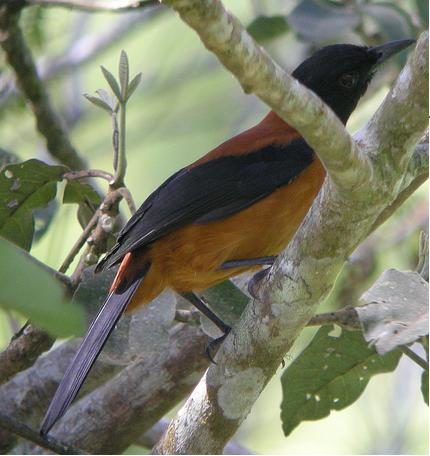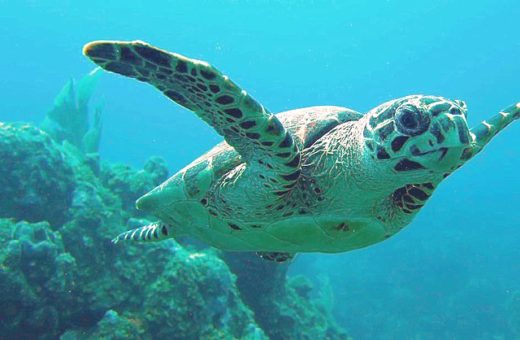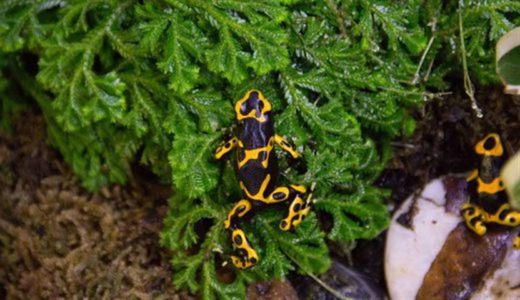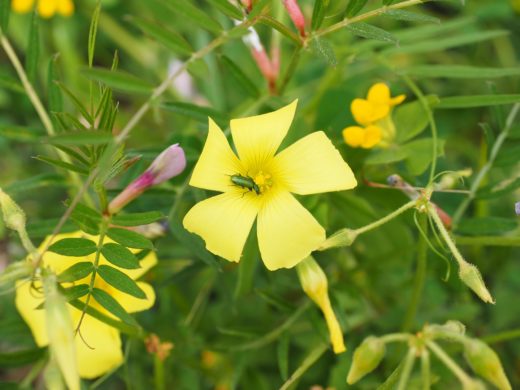Many animals naturally produce venoms, toxins, and poisons to defend themselves and incapacitate their prey, while others accumulate toxins from the food they eat. From jellyfish to snakes, poisonous creatures come in all different shapes, sizes, and colours. Below are 10 of the most poisonous animals in the world.
10. Asian tiger snake
The Asian tiger snake is the only snake species that is both venomous and poisonous. Not only does it produce toxin for its bite, but it also stores poison it obtains from its toad prey in its skin.
9. Hooded pitohui
The hooded pitohui harbours a neurotoxin in its skin and feathers called homobatrachotoxin. This can cause slight numbness and tingling in humans upon contact but is much more harmful to smaller animals. It is thought that the poison originates from the bird’s diet of beetles.
8. Hawksbill sea turtles
Because hawksbill sea turtles consume a variety of prey, including toxic algae and sponges, and venomous cnidarians, their flesh can also become incredibly toxic. This means anyone who eats the meat of one these turtles is likely to suffer from marine turtle poisoning, complete with nausea, vomiting, diarrhoea, and other stomach complaints.
7. Cane toad
Cane toads have poison glands which produce bufotoxin, one of the most poisonous toxins in the world. The toxin in their skin is so potent it can kill a variety of animals and is particularly dangerous to dogs. Cane toad tadpoles are also highly toxic to most animals when eaten.
6. Poison dart frog
The poison dart frog is small and brightly patterned, warning predators that it is not fit to eat. Their poison is kept in their skin and affects anyone who touches or eats it.
5. Spanish fly
A Spanish fly is a type of blister beetle that produces a toxin called cantharidin to defend against predators. The toxin is absorbed by the skin on contact and causes terrible blistering and burning pain. If the beetle is eaten, the toxin causes ulcers, blistering, and bleeding throughout the digestive tract, and can even result in death. Alasdair Rue (Wiki Commons)
Alasdair Rue (Wiki Commons)4. Comb stars
Comb stars contain tetrodotoxin, a potent neurotoxin that causes paralysis and eventual death from respiratory failure. Every gram of a comb star’s flesh holds enough toxin to kill 520 mice and, currently, there is no known antidote to tetrodotoxin.
3. Rough-skinned newt
There are only three species of poisonous salamander, the most poisonous of which is the rough-skinned newt. They hold enough tetrodotoxin in their flesh to kill most predators but produce a strong smell as a warning. Those unfortunate enough to eat the newt anyway, experience numbness throughout the body and cardiac arrest.
2. Striated surgeonfish
A striated surgeonfish accumulates toxins through its diet. While feeding on algae, they sometimes consume tiny dinoflagellates which produce maitotoxin. The build-up of this toxin in their flesh causes ciguatera fish poisoning which affects 20,000 to 50,000 people each year. The symptoms of ciguatera are much like any other type of food poisoning but can last from months to years and are sometimes so severe that the condition is misdiagnosed as multiple sclerosis.
1. Pufferfish
The liver, kidneys, and spikes of pufferfish contain dangerous nerve toxins poisonous to humans. While the meat of some species is considered an expensive delicacy in some cultures, it can be fatal if prepared incorrectly and thus only eaten when cooked by a licensed chef.


0 Comments